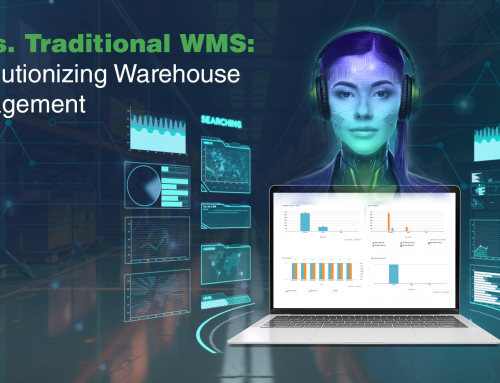Supply chain competitiveness is rarely seen from the lens of productivity. Often, the perspective is replaced with that of profitability – of cost margins and savings. Yet, attitudes towards productivity are changing. Studies suggest that for many businesses, improving the productivity of systems, processes, and the workforce has emerged as a critical target. To understand why this is so, it is necessary to understand the implications of productivity for the supply chain.
Productivity essentially is a ratio of the output to the input. In supply chain terms, the productivity of an organization can be high if it produces more units of output than its competitor for the same number of labour hours, machines, or materials expended in the exercise. However, if the same is delivered in greater time or if the quality of the output is suboptimal, the productivity of the former is questionable. Most organizations cannot tap into the true productivity of its systems and people as they tend to overlook the importance of the efficiency of output and time taken to achieve the same.
This can be best exemplified for the process of dispatch planning.
Dispatch involves negotiating within several challenges and variables of the dispatch environment. Traditional supply chain planners create dispatch plans after spending from days to a week of planning to develop a plan of questionable efficiency. To increase productivity and efficiency, much attention is directed towards increasing the iterations of planning and re-planning. The result – planners spend a significant time and effort towards creating an outcome that is sub-optimal at best.
The Challenges to Productivity Enhancement
The challenges to achieving greater productivity mainly stem from the challenges of realizing greater efficiency of output and time. To that end, the following challenges can be identified.
a. Complexity of Data
The dispatch planning process is undertaken within several constraints and multi-variable dependencies. Mathematically, it is a multidimensional space of the different variables – models and model specifications (colours, types, etc.), purchase orders, customers, dates of dispatch, vehicles, etc. and the range of values that these take.
The objective of dispatch is that the right product with the right specification reaches to the right customer on the right date. However, many scenarios can undercut this objective. For instance, the specific SKU is unavailable at the DC or warehouse nearest the customer. Or, an order specifies two SKUs that are not available in the same DC. Further, the stock levels for each SKU will vary for each DC, therefore, implying that certain orders may require clubbing from different DCs.
Planning involving so many variables and possibilities is susceptible to decisioning errors and wrong judgment calls. Moreover, the validation of data for accuracy and analysis of the problem space requires much time and effort.
b. Reliance on Legacy Software
An estimated 60% of supply chain planning is done in spreadsheets. Till around the 1980s, supply chains were largely local and data keeping and management simpler. Today’s global supply chains are characterized by an expanded product portfolio, a number of manufacturing plants, warehouses, DCs within a country or region, a large customer and dealer base, a fleet of carriers or 3PL providers. Changes and unplanned events in the supply chain environment are also fairly common – new product launches, plant shutdowns, production delays, vehicle failure, payment non-clearance, order changes, etc.
Spreadsheets are unsuitable for handling uncertainty and complexity in such scale.
Most often, planners are overwhelmed with growing mountains of relevant and irrelevant data such that they are unable to handle uncertainties and sudden changes. Planning errors can creep in leading to greater loss of fulfilment and added costs. And planning iterations for greater accuracy only lead to greater time invested in planning.
The Path to Greater Productivity
A look at the challenges to enhanced productivity suggests the need for change – a shift in the traditional approach to planning. First, it is vital to address the fact that the complexity of the supply chain will only grow. As the supply chain becomes more connected, there will be little scope for inefficiency and error.
In a complex ecosystem, decisions require the complete analysis of the data space – the range and extent of variables and their interdependencies. Such decisions cannot be backed by intuition or sheer judgment. Therefore, automation of such tasks is imperative to greater efficiency and accuracy. Further, if the complexity of data can be harnessed with technology, then this can create a high productivity advantage for the whole supply chain.
The technologies, in this context, are the Industry 4.0 solutions of Artificial Intelligence (AI), Machine Learning (ML), and analytical technologies. To understand the transformative potential of these technologies, consider the following.
- With big data analytics and simulations, it is possible to reduce multi-dimensional data into comprehensible data outputs for human understanding.
- With AI/ML, the complete depth of data can be leveraged to discover otherwise indiscernible data relationships and patterns.
- Deep learning optimization algorithms, inspired by the neural architecture of the brain, works on high complexity of data to identify optimal solutions that reinforce the operational objectives.
In light of these attributes, the following implications on productivity can be discerned.
a. Efficient Planning. Optimized planning ensures greater operational efficiency and execution and realization of organizational goals. For instance, Verdis Dispatch Allocation Planning (DAP) creates dispatch plans that are cost and fulfilment optimized. This means complete order fulfilment is guaranteed while tapping into all possible cost opportunities – dispatches from strategic locations, day-to-day scheduling of vehicles for effective fleet utilization, clubbing of orders from different locations for stock unavailability scenarios, etc.
b. Error-free planning. Since automation ensures fewer manual touch-points, planning is as accurate as the data generated. Further with integration of master protocol and auto-validation of data, data accuracy is always guaranteed. Dispatch planning is free from instances of error and inefficiency, be it order mix errors, wrong destination dispatch, unjustified and costly split orders, etc.
c. Fast Planning. While earlier, planning was constrained by the limitations of human computation and analysis of data, automation serves to utilize machine intelligence to process and analyze the data space. For instance, a typical dispatch plan in Verdis DAP is generated through the processing of 75 million data points connected through an infinite number of pathways within a matter of hours.
d. Flexible Planning. The implications of speed and dexterity are also manifest in terms of flexibility of planning, where changing variables can be integrated real-time, such that planning reflects the change in the ecosystem as and when it occurs. Moreover, fast re-planning on-demand ensures that the work on the ground remains unperturbed by changes in the environment.
In recent years, AI/ML has made landfall in almost all areas of the supply chain. It is estimated that almost 80-90% of all planning tasks can now be automated. As per a report by McKinsey, 63% of manufacturing executives reported a net increase in revenue and 44% reported increased cost savings due to AI utilization in the supply chain.
Implications for the Workforce
There exists a strong correlation between business performance and creativity. Organizations that foster a culture of employee motivation and creativity see greater growth and performance. Businesses with high employee engagement show up to 22% increase in profitability and 21% in productivity as compared to others. In a study by Harvard Business Review, companies with a high standard of excellence delivered $15 million increase in profits, 25% higher growth rate, and a 75% increase in productivity compared to other companies. Such statistics are the tale of leadership, of employee drive and motivation, and of human skill being directed towards more meaningful and intelligent tasks that require human design, reasoning, and communication.
With automation, dispatch planners can be freed from mundane and repetitive planning towards more skill-oriented and challenging tasks such as handling exceptions and ground-deviations of planning. This creates a culture of all-round performance.
Conclusion
As the supply chain continues to grow and evolve, the expectation for greater efficiency and accuracy is also growing. In other words, the margin of error is shrinking. In such circumstances, it is vital that organizations understand the value of greater productivity and the role that humans play in it. Yet, attaining high-end supply chain productivity requires a paradigm shift in our outlook of planning. Maximizing the efficiency of output and time requires harnessing the greater potential that automation and AI have to offer.









